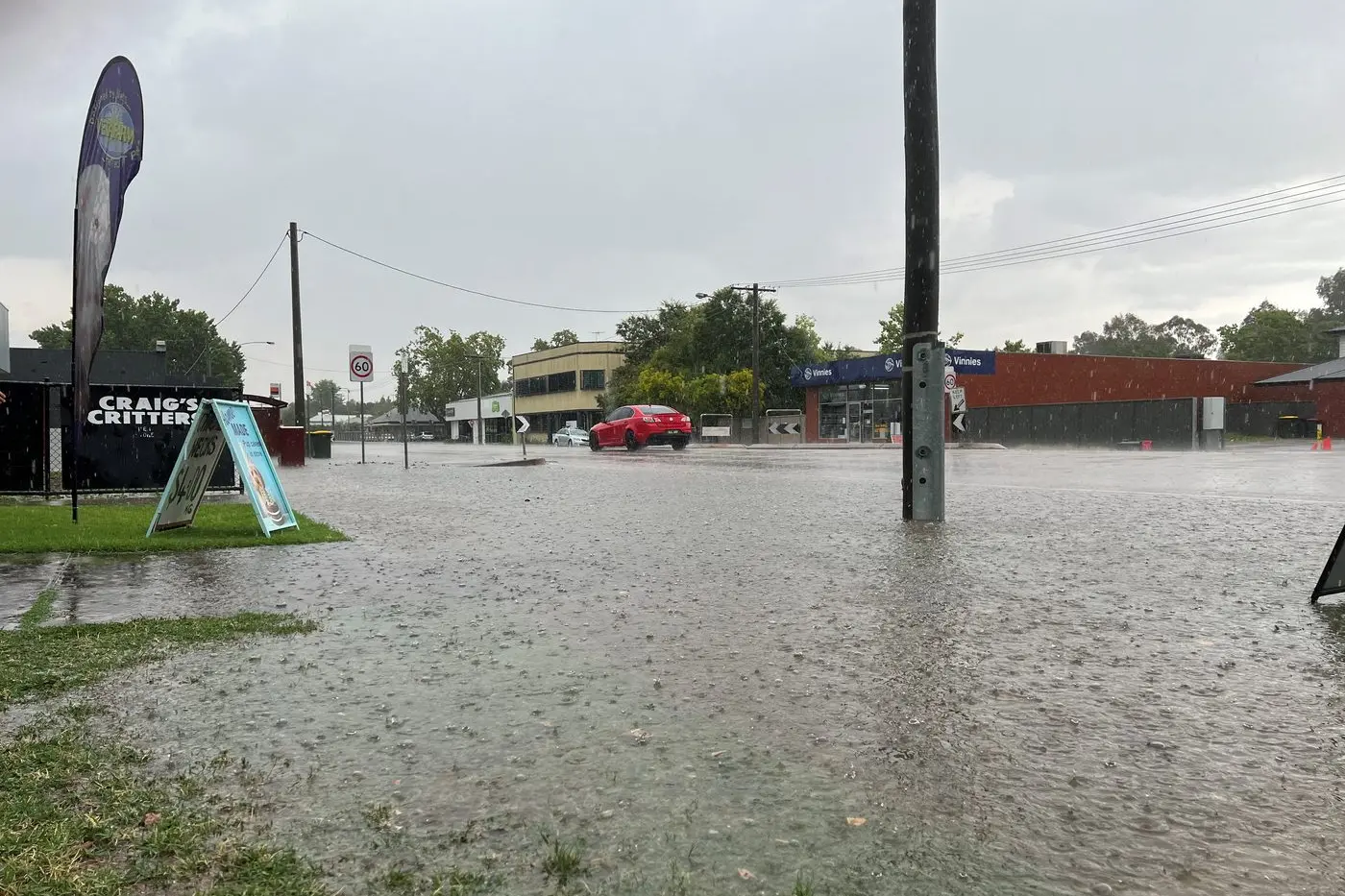PHOTO
THE new year commenced with widespread thunderstorm activity, strong winds, heavy hail and flash flooding in several towns in Victoria.
The Bureau of Meteorology weather station at Wangaratta Airport recorded 54.4mms to 9am Wednesday, January 3, although some residents around town recorded falls over 80mm in their rain gauges in the same period.
It was Wangaratta's wettest day for the first week of January since 1991 and before that in 1974 and 1934.
Wind gusts reached 104kph in Wangaratta at 4.40 pm on Tuesday January 2, which was the second time we've had a gust over 80kph this summer.
It was a record wind gust for January in Wangaratta - the previous strongest gust in January was 93kph on January 22, 2009 about a fortnight prior to the Black Saturday bushfires.
In the Melbourne suburb of Coldstream 68mms fell in just over two hours in the late afternoon trapping many motorists with road closures .
The maximum temperature at Coldstream reached 31.2 degrees before the storm hit.
Other suburbs were more than five degrees cooler.
It was the highest daily rainfall at Coldstream for January since 70mms in 1963.
Yan Yean Reservoir with a deluge of 60mms also recorded its highest daily rainfall for January since 1963.
Shepparton recorded 78.4mms to 9am Wednesday, January 3, which was the town's wettest January day since 105mms in 1941.
Kyabram with 65mms recorded its wettest January day since 82.8mm in 2008.
Most rainfalls in North East Victoria were in the 20mms to 40mms range, but Albury had less than 2mms; this maybe due to the fact that earlier on Tuesday morning a low pressure trough had its axis projecting south over Albury then suddenly this trough moved westwards and deepened during the afternoon resulting in heavier rainfalls to Shepparton.
Last September the City of Melbourne recorded one of its warmest and driest Septembers and was then followed by a wet October, then a dry November and then a wet Decembe.
Past records show there was a very similar profile in 1980 and we certainly had a very hot summer in Victoria and NSW in 1980-81 with a high frequency of thunderstorms and rainfalls were notably above average in North East Victoria.
The City of Melbourne in December last recorded only 207 hours of sunshine making this the most sunless December since 1992.
Both January and early February of 1981 and 1993 had many hot days of 40 to 42 degrees in our regions, particularly at mid January and during the fourth week of January, early February and mid February.
The heaviest rains were near end of January and the third week of February.
The wet season at Broome has made a feeble start following no rain in December and only 1.8mms in the last six months of 2023.
This was the fourth driest such period at Broome in the last 130 years.
The driest such periods were in 1929, 1935 and 2011.
Looking at 1930, 1936 and 2012 and also 1981 we are in for a very wet winter in 2024.





